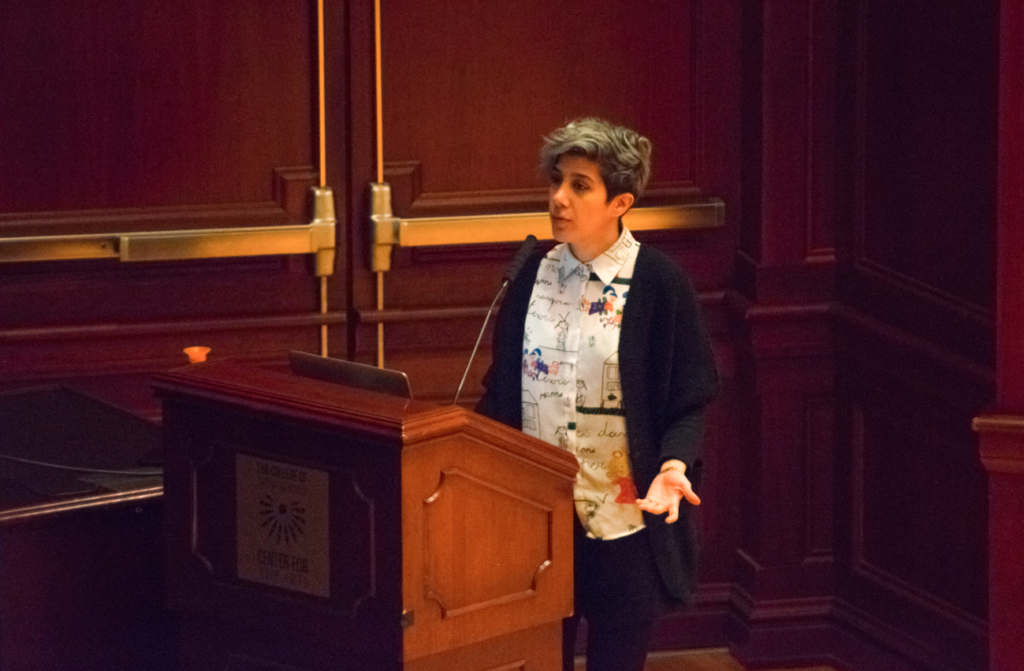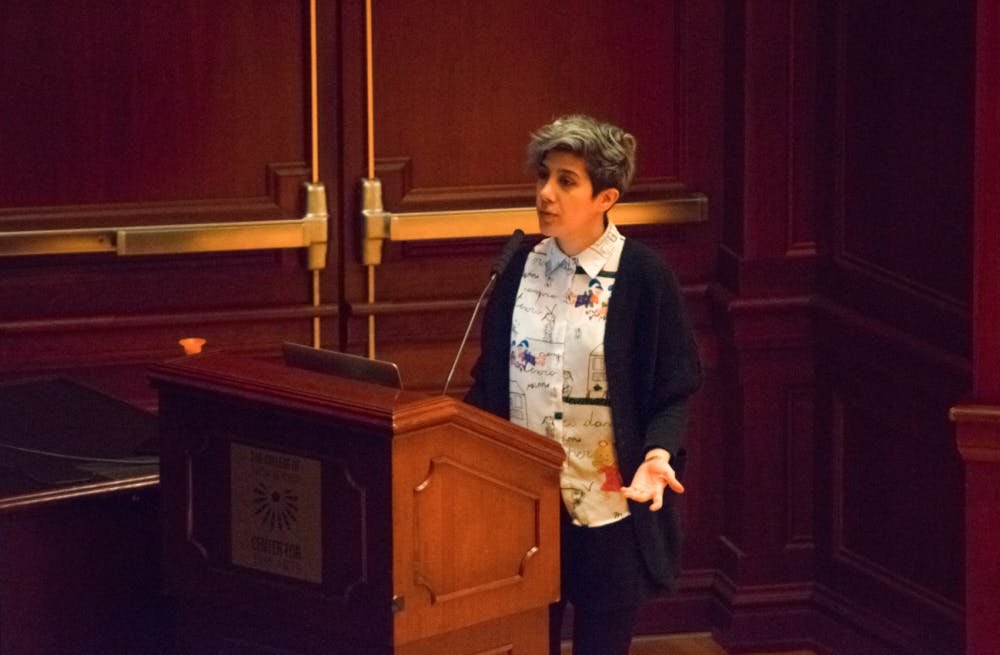By Jesse Stiller
Correspondent
As rain drenched the College’s campus on Friday, March 31, students gathered inside the Mayo Concert Hall for the weekly Brown Bag lecture. As they took their seats, Arts and Communications Interim Dean James Day, alongside Iranian-born activist Morehshin Allahyari, greeted the crowd.
“Allahyari is an activist, artist, educator and occasional curator. She is also a recipient of the Leading Global Thinkers of 2016 award by Foreign Policy Magazine,” Day said.
After a brief introduction, Allahyari stepped up to the podium and wasted no time describing her passion for art, especially 3D technology, and how she infuses activism into her work.
“I am interested in the phenomena of art activism,” Allahyari said. “It’s rather about changing the aspects and culture of society through art activism.”

Allahyari displayed one of her many art samples on the screen. Allahyari showed off her “Dark Matter” series, which consisted of several 3D sketches, most of which were humorous, such as a Barbie with a VHS for a body.
“I have a sense of humor about it,” Allahyari said.
After progressing through her “Dark Matter” series, everyone’s attention locked onto Allahyari as she phased into the crux of her presentation: activism in art.
A term popped up on one of these slides: “#additivism” — an amalgam of “activism” and “additive” that focuses on using 3D printing and technology to preserve cultures and heritage.
“We want to think of it as a movement… such as attending workshops and having discussions to provoke thought,” Allahyari said. “We have a large and great community.”
Allahyari then mentioned the “The 3D Additivist Manifesto.”
“We call for artists, activists and others to respond to our call… to be a part of this project,” Allahyari said.
Then came the most gripping moment of the afternoon. Allahyari showed an ISIS video that went viral a few years ago that showed members ravaging the Mosul museum, pulverizing every artifact in sight.
After the video was released, Allahyari, who was born in Iran and educated in Tehran, went to work.
“I started to contact archaeologists, historians and many others to gather info on the artifacts that were destroyed,” Allahyari said.
Allahyari tried to recreate the destroyed artifacts in Mosul via 3D technology and printing.
“It had to be done from scratch,” she said.
Allahyari explained the process of making these artifacts in a 3D software like Maya and showed a time-lapse video of a 3D printer creating one of these artifacts.
Allahyari said the 3D software files used to recreate these artifacts would be stored inside the artifacts in small makeshift holes to save time and preserve the culture in case they are destroyed again.
“These tools will save the political and cultural aspects of heritage. We have to take advantage of these tools,” Allahyari said.
Allahyari ended her presentation by emphasizing the importance of remembering and preserving history.
“Always, always think about looking back,” she said.







